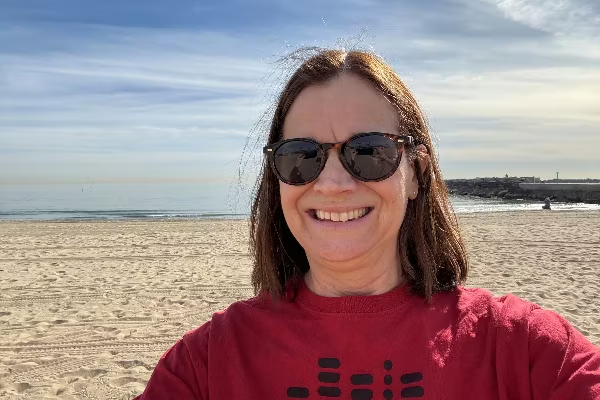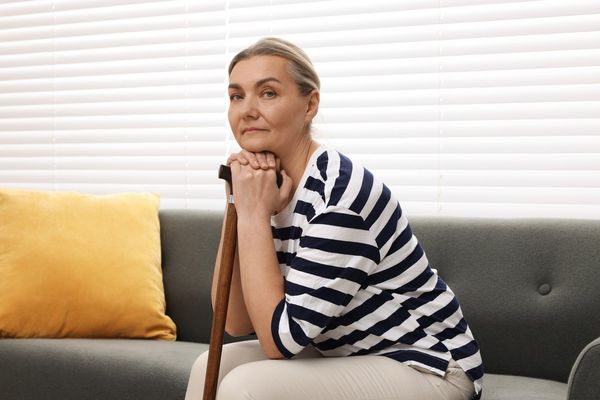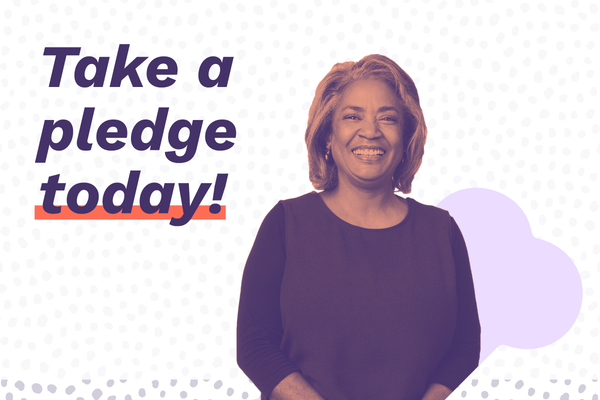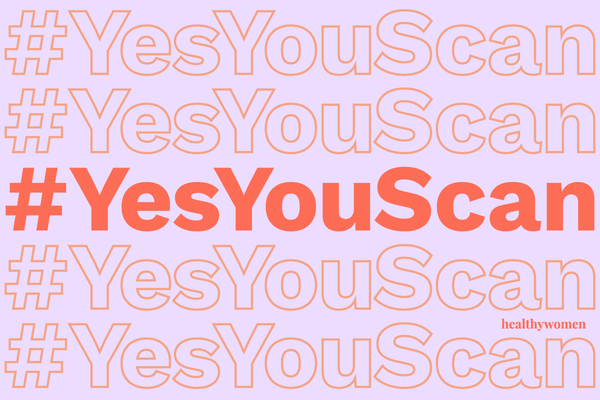October 20 is World Osteoporosis Day.
When Sherry Morse fell off a horse in 2015, she broke a lot of bones and suffered a "hanging shoulder injury," typically the result of a high-speed car accident. An orthopedist said he might expect that level of severity if someone fell out of an airplane.
"I came off my horse at a walk," Morse said. "It should not have been that severe an injury."
Two years prior, after a hysterectomy to address painful fibroids, Morse had been diagnosed with osteopenia, a loss of bone density that is not as severe as osteoporosis. She was 43 years old.
Nearly 54 million Americans suffer from low bone mass or full-blown osteoporosis, a disease that results in more severe bone loss.
After Morse's shoulder injury, another bone density scan showed she had developed osteoporosis — despite taking medication for her osteopenia.
"It was a little bit devastating," Morse said.
Who is at risk for osteoporosis?
Osteoporosis literally means "porous bones" and occurs when bone breakdown outpaces bone formation, which typically starts after age 50. Osteoporosis can lead to broken bones, especially wrists, hips and spines.
"While it's common to think of osteopenia and osteoporosis as conditions that affect only those who are older, these can actually be diagnosed in people of any age," wrote Dr. Kimberly Templeton, professor of orthopaedic surgery at the University of Kansas, and a member of HealthyWomen's Women's Health Advisory Council, in an email.
She added that this misconception can keep people from getting their bone mass evaluated.
Though men get osteoporosis, women are disproportionately affected; 8.2 million women have osteoporosis and 27.3 million have bone loss. Approximately 25% of women 65 and over will develop osteoporosis; one in two will break a bone as a result.
Studies of racial and ethnic differences suggest that Latina women have lower bone density and higher fracture risk than others. Black women have higher bone density and lower fracture risk than whites and other ethnic groups, but are less likely to be screened or treated with medication following a fracture.
Bone loss can result from certain health conditions, drugs or other treatments, and lifestyle factors. Risks increase with early menopause, previous fractures or a family history of osteoporosis-related fractures and other health conditions including:
- Autoimmune disorders like rheumatoid arthritis, lupus and multiple sclerosis
- Conditions like celiac disease and inflammatory bowel disease
- Certain cancers and blood disorders, including breast cancer, leukemia and sickle cell disease
- Endocrine conditions or hormonal disorders like diabetes, hyperthyroidism, irregular periods and premature menopause
Certain medicines — including some steroids, chemotherapies, antidepressants and hormone treatments — can increase your risk for osteoporosis even as they treat or prevent other conditions. Risks go up the higher the dose and the longer you take the medicine.
Weight loss, which can improve your cardiovascular health and lower cancer risks, can impede absorption of nutrients and increase osteoporosis risk. Other risks include a low-calcium diet, malnutrition, excessive alcohol consumption and cigarette smoking.
When you should get a bone density test
For many people, breaking a bone is the first sign of osteoporosis.
To detect osteoporosis before a fracture, women over 65 and higher-risk women ages 50 to 65 should get a bone density test, called a DXA (or DEXA) scan. Women who have a history of fractures or who have a parent who has broken a hip are at higher risk of a fracture.
"If you have chronic back pain and/or have lost additional height, it's worth discussing with your health care professional whether this could be due to low bone mass and if you should start treatment for that," Templeton said.
Insurance may cover DEXA scans before age 65 for people at higher risk. Medicare Part B covers DEXA scans once every 24 months depending on your medical history or health conditions. If your insurance doesn't cover your scan, estimated out-of-pocket costs are $125, though costs vary depending on where you live.
How to maintain healthy bones
"Osteoporosis can be prevented even among people with osteopenia," Templeton said. "It's never too early or too late to focus on your bone health."
"The first thing to do is to look at things that can be changed in your lifestyle to improve your bone health," Templeton said, adding that this is especially important for people who have risk factors for bone loss that they can't change.
- Stop smoking
- Reduce alcohol consumption
- Get enough calories and specific nutrients (protein, calcium and vitamin D)
- Start or increase weight-bearing exercise such as walking, jogging, hiking or dancing (always consult a doctor before starting any new exercise program)
- Work on balance and strength training to prevent falls and fractures
Though making these changes may be difficult, they are vital, according to Templeton.
Medications called bisphosphonates can prevent further bone loss for high-risk women or women with significant bone loss and can improve bone mineral density and lower fracture risk. It's important to take sufficient calcium and vitamin D when taking bisphosphonates.
"There are risks with taking these medications, but the risk of fracture due to low bone mineral density typically outweighs the risk of the medications," Templeton explained.
Don’t let osteoporosis control your life
An osteoporosis diagnosis can feel like a kick in the gut — an unavoidable sign of aging or a looming sense of vulnerability. But that doesn't mean one should surrender to a life spent in a rocking chair.
When Morse learned she had osteoporosis, she realized she had a choice.
"I'm not going to let this ruin my life," she told herself. "I can't sit home and be worried and scared, because then I'm going to be in worse shape."
Despite the risks, Morse did not let her diagnosis keep her from doing what she loves: riding horses. She literally got back on her horse and continues to ride.
Resources
National Osteoporosis Foundation
American Bone Health
- Menopause and Osteoporosis: How to Take Charge of Your Bone ... ›
- Osteoporosis: Knowing – and Owning – Your Numbers ... ›
- I Have Postmenopausal Osteoporosis: What I Wish I Had Known ... ›
- How Women of All Ages Can Prevent Osteoporosis - HealthyWomen ›
- For Women, Osteoporosis Leaves Physical and Emotional Scars - HealthyWomen ›
- 7 Ways to Prevent Bone Loss - HealthyWomen ›
- How to Prevent Osteoporosis - HealthyWomen ›
- Osteoporosis Is a Looming Public Health Crisis - HealthyWomen ›
- I Discovered I Had Osteoporosis When I Broke My Elbows - HealthyWomen ›
- Descubrí que tenía osteoporosis cuando tuve fracturas en mis codos por una caída - HealthyWomen ›






